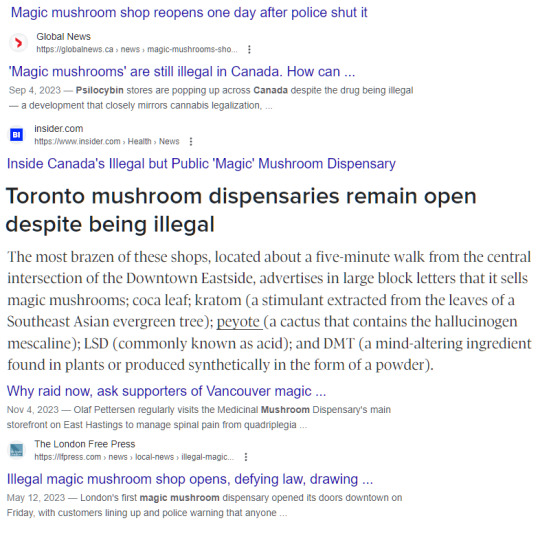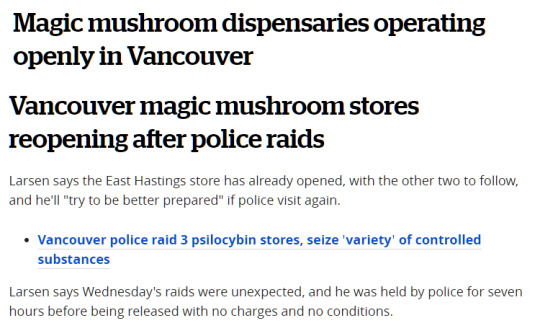#prison history
Explore tagged Tumblr posts
Text
"The scholarly literature on convict labor has been oscillating between economic and political explanations. According to the former, prisoners are put to work chiefly to generate surplus from unfree labor power. The state benefits from convict labor to decrease the administrative costs and to make profit, or to provide cheap labor to private enterprises. In either case, use of forced labor in prisons allows the sovereign to get rid of all privileges of free workers (bargaining power, political organizations, historically acquired rights). The power oriented political explanations, however, oppose the profitability of convict labor and emphasize instead the organized violence of the state, the governmental strategies, and the creation of social control mechanisms. Disciplining the society may have economic ends (i.e., the repression of the working-class), but the immediate outcome of prison labor is not profit; in most cases, it is rather a financial burden to the state."
Footnote 2: The area and time period of research naturally tend to determine the theoretical perspectives. Nevertheless, regardless of the context, these two approaches constitute the main axes of the array of explanations. Classic works that represent these approaches are, respectively, Alex Lichtenstein, Twice the Work of Free Labor: The Political Economy of Convict Labor in the New South (London, 1996) and David Garland, The Culture of Control: Crime and Social Order in Contemporary Society (Chicago, 2001). For Lichtenstein’s later proposal for a more comprehensive analysis, see Alex Lichtenstein, “A ‘Labor History’ of Mass Incarceration,” Labor 8 (2011): 5–14.
- Ali Sipahi, "Convict Labor in Turkey, 1936–1953: A Capitalist Corporation in the State?" International Labor and Working-Class History No. 90 (Fall 2016): p. 244.
#convict labour#penal labor#prison labor#historiography#prison history#unfree labor#research quote#academic quote#reading 2025
58 notes
·
View notes
Text
2 notes
·
View notes
Text

"The prison has become a black hole into which the detritus of contemporary capitalism is deposited. Mass imprisonment generates profits as it devours social wealth, and thus it tends to reproduce the very conditions that lead people to prison. There are thus real and often quite complicated connections between the deindustrialization of the economy—a process that reached its peak during the 1980s—and the rise of mass imprisonment, which also began to spiral during the Reagan-Bush era. However, the demand for more prisons was represented to the public in simplistic terms. More prisons were needed because there was more crime. Yet many scholars have demonstrated that by the time the prison construction boom began, official crime statistics were already falling."
- Angela Davis, Are Prisons Obsolete?
#angela davis#black liberation#black history#marxism#marxism leninism#anarcho communism#sociology#politics#philosophy#socialism#communism#anarchy#anarchism#intersectionalfeminism#blm#blacklivesmatter#1312#abolish ice#abolish prisons
370 notes
·
View notes
Text

Prison Guard by Franz Czermak
#franz czermak#art#prison#dungeon#guard#guards#watch#halberd#helmet#lamp#lantern#light#europe#european#history#architecture
208 notes
·
View notes
Text

German soldiers surrender to US forces as they make their advance - Lemgo, Germany, April 1945
#world war two#ww2#1940s#worldwar2photos#history#wwii#ww2 history#world war 2#wwii era#ww2history#germany#lemgo#Westphalia#surrender#pow#prisoner of war#us army#usarmy#1945
158 notes
·
View notes
Text
one of the funniest news things in canada that always tickles me is the ongoing war between magic mushroom shops and the police.




this is the absolute height of humour to me right now
#tw drugs#lovingly cracking open a news paper just for the articles about dispensaries trolling the police#making drugs illegal has literally never ONCE in history worked#decriminalize it so we can stop overpaying useless cops to go on raids#offer SAFE AND CLEAN GOVERNMENT INSPECTED drugs like how we do with weed#stop the street drug deaths. tax them towards healthcare and social services and fucking UBI already#have the harder drugs harder to access along with on site support. no one WANTS to be stuck on meth#but ruining their lives in prison has helped approximately no one#jj stuff
1K notes
·
View notes
Text

Australian soldiers enjoy a moment together after being liberated from a Japanese concentration camp (1945)
#concentration camp#japan#1945#1940s#ww2 photo#ww2 germany#second world war#world war 2#wwii#ww2 history#far right#hate crimes#naziism#historical photos#history#history photos#world war two#sealed in time#black and white#black and white photography#black & white#b&w#b&w photography#worldwar2photos#pow#prisoner of war
280 notes
·
View notes
Text

#communism#history#current events#politics#socialism#marxism#gaza#anarchism#anarchocommunism#gaza solidarity encampment#communist party#communist#angela davis#bpp#prisoner#progressive politics#rehabilitation#rehabilitative justice#liberty#social justice#socialist politics#social issues#black liberation#blacklivesmatter#neurodivergent#homeless#lgbtq#solidarity#usa#current affairs
549 notes
·
View notes
Text

cant stop thinking about him and the word martyr..
#first time rewatching prisoners after taking an art history class and when bobby passed my first thought was this:#dude.. that looks like the death of christ��#the way he’s posed in his final scene- he looks exactly like christ in the lamentation by domenichino#guys.. no one knows how Insane that thought makes me and denis probably didnt take inspo from an old painting from the renaissance#but guys.. GUYS.. THATS CRAZY TO ME!!!!!!#fanart#art#doodle#david dastmalchian#bob taylor#prisoners#prisoners 2013
312 notes
·
View notes
Text

"GRIM REMINDER," Montreal Gazette. August 11, 1989. Page 3. --- Tourists unaware of memorial for dead inmates --- By CATHERINE BUCKIE of The Gazette In a barracks-like building that less than a year ago served as a recreation room for maximum-security prisoners, 50 people clutching dried flowers gathered to remember the inmates whose lives ended before their sentences.
Outside the Laval Institute, tourists' cars filled the parking lot, and people lined up to get a glimpse of what life was like inside.
"I feel uncomfortable holding the service here, now that it has become a tourist attraction," said Marie Beemans, a counsellor with the Prisoners' Rights Committee. "But it's important that the people who pass through here see it not only as an attraction but know that people died here."
But the tourists weren't likely to know. There was only one sign proclaiming National Prisoners' Justice Day a small poster attached to the cornerstone of the main building. During the guided tour, there was no mention of the annual day of mourning prisoners' rights groups hold in prisons across Canada every Aug. 10.
Guy Petit-Clair, regional communications director for Correctional Services Canada, explained that the occasion was not mentioned "because it has nothing to do with Operation Open House. They (the ex-convicts and prisoners-rights activists who commemorated the day) do their thing and we do ours."
But ex-convicts who spent time at what they call the Old Pen - which closed last December felt that because the tourists weren't told of the prisoners' memorial, they got only half the story of the jail.
"All they tell is the administration side in there," said Michel Jacques, pointing to the Old Pen from the grave-site up the road.
Jacques, who spent 14 months of his 10-year sentence at the Laval Institute, told people gathered at the graves that the men whose numbers are carved on the tombstone "must be in paradise because they were already in hell."
In the evening, about 25 people gathered at a vigil outside the Parthenais detention centre to support two inmates who have tested positive for the human immunodeficiency virus linked to AIDS. The two staged an eight-day hunger strike last month to protest what they say is discriminatory treatment.
Inmates began observing National Prisoners' Justice Day 16 years ago when an inmate at Millhaven Penitentiary near Kingston died in solitary con-finement. Across Canada yesterday, prisoners staged hunger strikes and work stoppages to protest conditions.
Photo caption: Ex-convict Michel Jacques, centre, and others prepare to put flowers on prison gravesite. Gazette, Nancy Ackerman
#montreal#laval#prisoner's justice day#pjd#prison tourism#prisoner solidarity#prisoner organizing#prisoner resistance#prisoners' rights#death in prison#deaths in custody#death behind bars#laval institution#st vincent de paul penitentiary#prison history#canadian prison history#canadian history#history of crime and punishment in canada#crime and punishment in canada
21 notes
·
View notes
Text

The Great Fire of London, with Ludgate and Old St. Paul's
Artist: Unknown
Date: ca. 1670
Medium: Oil on canvas
Collection: Yale Center for British Art, New Haven, CT, United States
Description
Three hundred fifty years ago, from September 2 to 5, 1666, a catastrophic fire swept westward from Pudding Lane in the City of London along the course of the river Thames, before stopping just short of Whitehall Palace. By September 4, the fire had reached Ludgate, the westernmost gate of the old city. That moment is represented in this painting, which was made shortly after the Great Fire to commemorate the disaster. Ludgate is consumed by fire while the medieval St. Paul’s Cathedral burns in the distance. The diarist John Evelyn described the destruction of Old St. Paul’s in apocalyptic terms: “the stones of St. Paul's flew like [grenades], the melting lead running down the streets in a stream, and the very pavements glowing with fiery redness, so as no horse nor man was able to tread on them.”
#painting#historical scene#oil on canvas#the great fire of london#british history#historical art#oil on canfas#fine art#oil painting#artwork#cityscape#correctional institution#fire#flames#people#portcullis#prison#river#buildings#smoke#17th century painting#british art#european art#yale center for british art
86 notes
·
View notes
Note
Sorry if this is a little out of your wheelhouse, but I have to write an essay due in April apart of my collegework, and I want to do it on the movie “Sing Sing” - particularly its view of/representation of the Prison System and Black men, and the correlations the two have (ie the way Black people are disproportionately targeted). I wanted to know if you knew of any academic articles or books which discuss the relationship between Prisons/ Prisoners and Black men? The stereotypes attributed to them or the overlap between stereotypes of Prisoners and Black men, the way Black men are expected to act especially in those sorts of environments, etc. I've done looking of my own to collect sources, but I figured I'd ask anyways to try and get more to help with forming a better/more insightful essay 😅 Thank you, and have a nice day!
Widening your scope a little to prison abolition overall will give you context as to the history and the environment, plus some familiar names to go to for their written works for your more specific questions (e.g. why that environment forces Black men to behave a certain way, how certain stereotypes about Blackness and Black men lend themselves to creating the mass social consent of capturing and imprisoning Black bodies).
The New Jim Crow by Michelle Alexander is always a go to; @embodiedfutures used to run the BFP page that has an archive full of prison abolition resources (They have so much literature on everything!!)
106 notes
·
View notes
Text


Gravity Falls is about old men with personality disorders
#my art#gravity falls#fiddleford mcgucket#bill cipher#stanford pines#stanley pines#To be fair the most likely to be diagnosed with ASPD is Stanley since he was In Prison#+history of conduct disorder since early childhood#He's just like me fr etc etc#there is something deeply wrong with me#And it's one of these#Don't ask me which one#fuck if i know#Polycule from hell
215 notes
·
View notes
Text

Lucretia Borgia by Jean-Paul Laurens
#jean paul laurens#art#lucretia borgia#lucrezia borgia#borgia#italian#noblewoman#italy#history#europe#european#femme fatale#renaissance#dress#robe#prison#window
202 notes
·
View notes
Text
I don’t know what it is but I feel like henry winter has his fingers in every fold of my brain
I can’t escape the man
89 notes
·
View notes
Text




College life, Germany 1900/10
#college life#1900s#1910s#germany#history#vintage#photography#deutschland#people#students#university#college#heidelberg#freiburg#karzer#student prison#graffiti#beer#fencing
68 notes
·
View notes